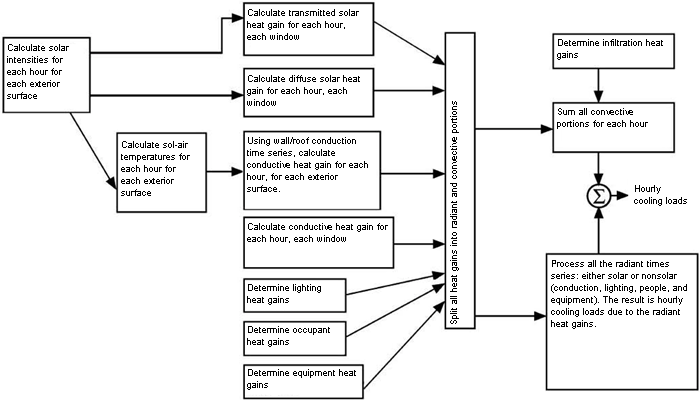Design cooling loads are based on the assumption of steady periodic conditions (i.e., the design day's weather, occupancy, and heat gain conditions are identical to those for preceding days such that the loads repeat on an identical 24 h cyclical basis). Thus, the heat gain for a particular component at a particular hour is the same as 24 h prior, which is the same as 48 h prior, etc. Cooling load calculations must address two time-delay effects inherent in building heat transfer processes:
- Delay of conductive heat gain through opaque massive exterior surfaces (walls, roofs, or floors)
- Delay of radiative heat gain conversion to cooling loads.
Exterior walls and roofs conduct heat because of temperature differences between outdoor and indoor air. In addition, solar energy on exterior surfaces is absorbed, then transferred by conduction to the building interior. Because of the mass and thermal capacity of the wall or roof construction materials, there is a substantial time delay in heat input at the exterior surface becoming heat gain at the interior surface.
Most heat sources transfer energy to a room by a combination of convection and radiation. The convective part of heat gain immediately becomes cooling load. The radiative part must first be absorbed by the finishes and mass of the interior room surfaces, and becomes cooling load only when it is later transferred by convection from those surfaces to the room air. Thus, radiant heat gains become cooling loads over a delayed period of time.

Overview of Radiant Time Series Method